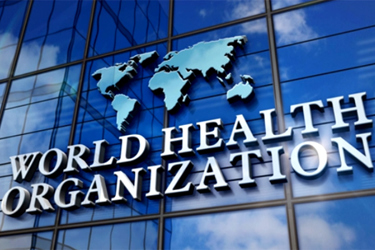WHO Guidance Seeks To Reduce Antimicrobials In Pharmaceutical Liquid Waste
By Tim Sandle, Ph.D.

Wastewater treatment plants are present within many pharmaceutical facilities to process waste products and unwanted active ingredients. Treatment stations are necessary due to the scale of operations and to ensure that the pollutant concentrations in the treated wastewater comply with local and/or national regulations regarding the disposal of wastewater in community treatment plants or rivers, lakes, and oceans.1 Many regulations are designed to address pollution concerns, especially to lessen the impact of antimicrobials (small molecule pharmaceuticals) being released into municipal water systems, which can increase multi-drug resistance through the transfer of genetic material to environmental organisms.2
Given that pharmaceuticals are biologically active, often highly potent molecules with conserved targets across species, environmental emission may cause unwanted effects on other organisms than those the pharmaceuticals are intended to affect.
While most nations have regulations and emission standards, there is no globally accepted framework. In addition, some governments are more diligent than others in testing and fining pharmaceutical companies for excessive releases.
There is a recognized need for international evidence-based guidance and tools on the management of industrial waste containing antimicrobials. To aid in this process, the World Health Organization recently issued a draft document titled WHO Guidance on waste and wastewater management in pharmaceutical manufacturing with emphasis on antibiotic production.3
What are the implications for the global pharmaceutical community? Let’s look at it more closely.
Importance Of Wastewater Treatment
Industrial pharmaceutical effluents must receive at least pretreatment (and ideally full treatment) at the actual manufacturing plant. This is necessary to reduce the pollutant load before discharge to the sewer. Discharges from many pharmaceutical facilities will invariably contain pollutants that cannot be removed by conventional sewage treatment. Wastewater plants are designed to remove solids and pollutants, break down organic matter, and restore the oxygen content of treated water. Ideally, a pharmaceutical compound and its metabolites will undergo partial or complete mineralization or slow biodegradation after binding on solid sludge.
In poorly performing plants, pharmaceuticals pass unchanged through the wastewater treatment plant and into the general water system or the environment.4 While many pharmaceutical companies take strides to ensure that they do not add pollutants to water supplies, unfortunately, pharmaceuticals remain widespread pollutants in the aquatic environment.4
To assess the risk, pharmaceutical companies should undertake an evaluation of compound degradability, in terms of half-lives, then develop appropriate integrated solutions to mitigate the entry of pollutants into the water cycle. One way to address pollutants is to use higher hydraulic retention times, although there are other measures.
A study conducted in 2022 looked at 258 rivers across the globe, including the Thames in London, the Hudson in New York, and the Amazon in Brazil, and used mass spectrometry to screen for pharmaceutical compounds.5 Sixty-one pharmaceuticals were detected, such as carbamazepine, metformin, and caffeine, with pharmaceutical pollution contaminating water on every continent. Among the more harmful ingredients detected were the antimicrobials sulfamethoxazole and ciprofloxacin. Such antimicrobials may contribute to the development of resistance in both non-pathogenic and pathogenic microbes, thereby threatening the effectiveness of antimicrobials as therapeutic agents in humans, farmed and domestic animals, and crops.
The New WHO Draft Guidance
The new WHO guidance seeks to establish an independent, scientifically derived framework for applying targets to manage discharges from antibiotic manufacturing facilities. Once agreed upon globally, such a framework should limit antibiotic resistance development and ecological effects caused by discharges of antibacterial agents into the environment. The guidance applies to liquid waste, where it is common to discharge the waste into waterways. The guidance acknowledges that the treatment of solid waste is less advanced and here the primary process should remain incineration. More specialized processes, like hydrothermal treatments, are required for the waste from fermentation plants since the concentration of antimicrobial-resistant bacteria will be especially high.
To support a framework, the document guides risk assessment, management, and surveillance to ensure targets are consistently met. The guidance further informs about the adoption of such targets, risk management processes, and surveillance. The risk assessment model recommended is the Hazard and Critical Control Point (HACCP) methodology.
As well as finished pharmaceuticals, the guidance includes active pharmaceutical ingredients (APIs) with known antimicrobial activity, defined as a minimum inhibitory concentration exceeding 5% of the final API. This is the lowest concentration of the drug that prevents visible in vitro growth of bacteria or fungi. Also of concern is the release of any genetically modified bacteria, especially those that have been purposefully selected for and enriched by the pharmaceutical plant. Excluded from the document are biocides and disinfectants; this could prove to be an oversight given the converging patterns of antimicrobial and disinfectant resistance.6
To begin with, a pharmaceutical plant will need to assess the level of risk. This requires calculating the concentrations of antibiotics present in effluents. The guidance recommends two approaches: mass balance calculation (estimated losses during production) or chemical analysis of wastewater samples. Given the greater accuracy of measurement, direct chemical testing is preferred using an analytical method with a suitable limit of quantification.
Progressive Improvement
One of the underlying principles is the concept of progressive improvement. This means different countries and companies can enter the reduction process at the appropriate level, according to their resources, and proceed to work stepwise to achieve eventual compliance with the overall health-based targets. This approach is designed to avoid the immediate application of stringent criteria without affording sufficient time to adapt and to avoid any restrictions on the provision of antimicrobials to the population.
Once the framework is agreed upon, the drivers to conform will be both punishment, for actions such as failure to implement, and rewards, such as in cases where successful adoption leads to manufacturing increases through new procurement opportunities.
Targets
The framework is developed around targets. These are divided into:
- Ecological outcomes: This is based on the overall health of the local ecosystem. This includes the use of a dilution factor, with the recommendation of a 1 in 10 dilution for discharge into rivers and a 1 in 100 dilution for discharge into seas.
- Effluent water quality: This involves an assessment of discharges using predicted no-effect concentration (PNEC) values. PNEC is the concentration of a chemical that marks the limit at which no adverse effects of exposure in an ecosystem are measured. These values will vary according to different chemicals and are based on minimal inhibitory concentrations) extracted from the European Committee on Antimicrobial Susceptibility Testing - EUCAST database. If no value is available, the default value is 50 ng/mL.
- Performance: This is expressed by the removal of microbial hazards (as measured by log reductions) and chemical hazards (as expressed by percentage reduction).
- Specified technology: Use of appropriate and proven technological processes.
Where ecological outcomes require modeling, the WHO guidance recommends conducting studies using cyanobacteria (algae) since these bacteria are more sensitive to ecologically driven changes than most other aquatic plants and animals.
To reduce the risk of antibiotic-resistant bacteria being released in high numbers, the guidance sets out risk-based approaches to reduce microbial numbers. These are based on assessing the cultivable bacterial load pre- and post-treatment by a minimum of a 100-fold reduction (a comparison of standard biological treatment and the addition of an antimicrobial reduction step). The types of antimicrobial reduction steps presented include oxidative treatment, UV-light, chlorination, sterile filtration, and thermal treatment.
Measuring Success
The successful adoption of the WHO framework can best be assessed through rigorous analytical testing at different phases. The recommended test points are:
- Untreated wastewater at the outlet to a municipal sewer or water body.
- Treated wastewater sampled at the outlet of in-house wastewater treatment processes.
- Treated wastewater at the outlet of a common effluent treatment plant dedicated to the treatment of industrial wastewater (e.g., at an industrial park).
- Treated wastewater from a municipal wastewater treatment plant.
- Treated wastewater from in-house treatment for application to land.
The most applicable of these phases should be selected.
The WHO document provides a useful starting point for seeking a harmonized framework to control pharmaceutical facility waste discharges. Underpinning the approach is the necessity for controlling emissions at the source to deter the transmission of antibiotic resistance in the environment.
Submitting Public Comments
The WHO is seeking public feedback on the draft guidance until January 26, 2024, using the web form linked on its webpage here.
References
- Jones, O.A.H., Voulvoulis, N. and Lester, J.N. (2007) Human Pharmaceuticals in Wastewater Treatment Processes, Critical Reviews in Environmental Science and Technology, 35 (4): 401-427
- Zhao Z.M., Wang T., Xu Z.H., et al. The fate of antibiotic resistance genes and their influential factors during excess sludge composting in a full-scale plant. Bioresource Technology. 2021, 342: 126049
- WHO Guidance on waste and wastewater management in pharmaceutical manufacturing with emphasis on antibiotic production, World Health Organization, Geneva, December 2023: https://cdn.who.int/media/docs/default-source/wash-documents/burden-of-disease/waste-and-wastewater-management-in-pharma-manufacturing---pub-consult-231214.pdf?sfvrsn=5e5e3acc_3
- Han Z, Feng H, Wang C, Wang X, Yang M, Zhang Y. Mitigating Antibiotic Resistance Emissions in the Pharmaceutical Industry: Global Governance and Available Techniques. China CDC Weekly. 2023, doi:10.46234/ccdcw2023.195
- Sandle, T. Pharmaceutical Waste and the Need for a Joined-Up Regulatory Approach, Today’s Esquire, December 2022: https://www.todaysesquire.com/pharmaceutical-waste-and-the-need-for-a-joined-up-regulatory-approach/
- Sandle, T. (2021) Disinfectant resistance: The next threat to pharmaceutical contamination control?, European Journal of Parenteral and Pharmaceutical Sciences, 26 (3), DOI: https://www.ejpps.online/post/vol26-3-editorial-disinfectant-resistance-the-next-threat-to-pharmaceutical-contamination-control
About The Author:
 Tim Sandle, Ph.D., is a pharmaceutical professional with wide experience in microbiology and quality assurance. He is the author of more than 30 books relating to pharmaceuticals, healthcare, and life sciences, as well as over 170 peer-reviewed papers and some 500 technical articles. Sandle has presented at over 200 events and he currently works at Bio Products Laboratory Ltd. (BPL), and he is a visiting professor at the University of Manchester and University College London, as well as a consultant to the pharmaceutical industry. Visit his microbiology website at https://www.pharmamicroresources.com.
Tim Sandle, Ph.D., is a pharmaceutical professional with wide experience in microbiology and quality assurance. He is the author of more than 30 books relating to pharmaceuticals, healthcare, and life sciences, as well as over 170 peer-reviewed papers and some 500 technical articles. Sandle has presented at over 200 events and he currently works at Bio Products Laboratory Ltd. (BPL), and he is a visiting professor at the University of Manchester and University College London, as well as a consultant to the pharmaceutical industry. Visit his microbiology website at https://www.pharmamicroresources.com.
